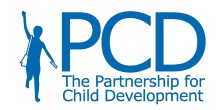 Fortifying foods: four lessons for micronutrient distribution
Fortifying foods: four lessons for micronutrient distribution
Getting essential vitamins and minerals on the menu for all children is key to reducing undernutrition. Four lessons can help roll out the distribution of micronutrients all over the world.
The benefits of Micronutrient Powders
Children in developed countries benefit from vitamins and minerals added to foods like cereals that boost healthy brain development and physical growth, helping to support the social and economic potential of the next generation. Unfortunately, not all children around the world share this advantage. Deficiencies of vitamins and minerals (also called micronutrients) are part of the larger problem of undernutrition which is an underlying cause of up to one-third of child deaths in regions such as sub-Saharan Africa and southern Asia, according to figures from Unicef.
How and what works
Undernutrition from micronutrient deficiency is certainly not a new problem, the UN and the academic community focused on generating the evidence to better understand the issue during the latter part of the 20th century. There was also growing awareness of the need for new innovations to address pervasive nutritional deficiencies like anemia. With this in mind, and in response to a Unicef-led challenge to find new solutions that could benefit the world's poorest children, micronutrient powders (MNPs) were developed.
Affectionately referred to as 'sprinkles', MNPs are packets of powdered vitamin and minerals that can be easily added to children's food by caregivers without any change to the colour, texture or taste of traditional foods, and with no overt negative side effects. Studies have found MNPs a safe and effective intervention to cure micronutrient deficiencies among children.
In 2011, a significant milestone was achieved with the publication of the World Health Organisation's guidelines on the use of MNPs for children under two. It is both remarkable and humbling to look at the advances that the global community has made in the adoption of MNPs over a few short years. According to a recent Unicef and Centres of Disease Control analysis, over 14 million children have received MNPs in 2011 in over 30 countries. Yet, more work remains in reaching the estimated 273 million anemic children worldwide.
As researchers this means that answering the 'how' becomes as important to the 'what' we were previously so engaged with. Indeed, the Lancet's series on maternal and child nutrition, published last year acknowledged that research on delivery, implementation and scaling-up of interventions is essential as the focus shifts towards action.
The Lancet series also highlighted the need for qualitative evaluations to explore the 'whys' and 'hows' of what works in order to document the factors that affect implementation. Such work is essential, but challenging, and no systematic process is in place for this type of evidence. We do not yet have the answers, but gladly take on the challenge to identify the core obstacles to and opportunities of taking MNPs to scale in different countries.
Countries using sprinkles
As the new focus of our work shifts towards researching the process of scaling up, we can start by looking to the early adopters of MNP programmes. Countries such as Bolivia, Dominican Republic, Guyana, Kyrgyzstan and Mongolia have shown early success in the implementation and scaling-up of national public sector MNP programmes. Coverage rates of all children under two in these countries are around 50% or higher.
Each country is unique in its approach and response to the challenges of effectively distributing MNPs. For example, in Bolivia, engaging the private sector in the local production of MNPs ensured that an adequate and reliable supply was always available, preventing stock-outs at public health centres. In Kyrgyzstan, in order to address the challenges of introducing a new product and new behaviours, implementers used a three-channel communications approach to reach families – targeting primary health care providers, village health committee volunteers and through the local and national media.
First lessons learnt
By looking at the operational, financial and political conditions that either enhanced or inhibited the national scale-up of MNP distribution in these countries, we are beginning to identify some key preliminary lessons. These include:
- The integration of MNP distribution into existing public health and nutrition programmes, such as infant and young child feeding and well-baby programmes, is an effective way to reach more children and reduce anemia.
- Influential local champions can encourage the use of MNPs. Advocacy efforts should be tailored to involve government agencies and policymakers who can inform and shape national development plans and the mobilisation of resources. Prioritising and facilitating multi-sector co-ordination and engaging the private sector are also key considerations in developing strategies for sustainable implementation.
- Training healthcare providers, supporting supply chain management, building local communications capacity and embedding monitoring and evaluation into programmes are all useful tactics.
- Ongoing behavior-change and demand-creation strategies will increase and sustain the use of MNPs. These strategies to raise public awareness should be tailored towards healthcare providers and caregivers and families themselves.
As we continue to complete comparative country assessments, we are learning that there is an inherent tension between the replication of successful MNP programmes and national contexts; making scaling-up programmes a complex process. Taking a programme to scale in Mongolia will not look the same as in Bangladesh. Some of our goals at the SickKids Centre for Global Child Health in the coming year will be to better understand the governance systems and financial resources that enabled the successful expansion of programmes in countries like Bolivia and Kyrgyzstan. It is through further exploring this dynamic process of national and cultural contextualisation that we look forward to finding new and creative opportunities for the sustainable development of solutions that will benefit more children worldwide.
Article written by Stanley Zlotkin and Claudia Schauer, Toronto featured in The Guardian.



